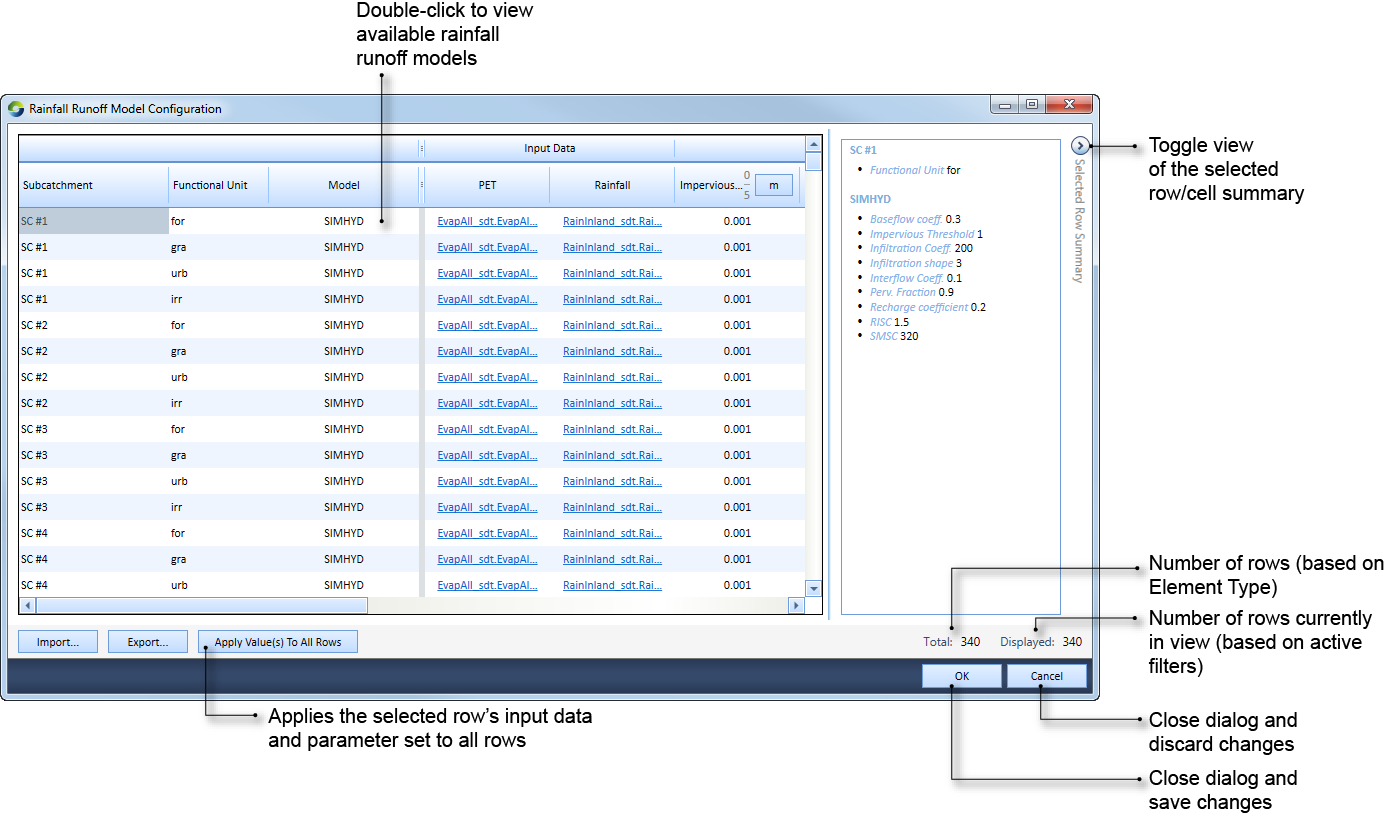Note: This is documentation for version 4.11 of Source. For a different version of Source, select the relevant space by using the Spaces menu in the toolbar above
Rainfall runoff models
A rainfall runoff model is used to derive runoff for a particular area from inputs of rainfall and potential evapotranspiration (or areal potential evapotranspiration). All rainfall runoff models in Source are conceptual models that represent catchment hydrological response to rainfall as a series of mathematical relationships. They provide runoff output from each functional unit as total discharge, which is split into quick flow (surface flow) and slow flow (baseflow) components. Refer to the Source Scientific Reference Guide for more detail.
Choosing the right model
Choosing and calibrating your rainfall runoff model is essential. The quality of your rainfall runoff calibration can interact with, and affect output from other models. For example, where constituent load is calculated as the product of flow and concentration, any errors in flow estimates will be propagated through to load estimates.
Consider the following when choosing a rainfall runoff model:
- What models do you and other people in your organisation have experience with;
- Have any rainfall runoff models worked well for your catchment in the past;
- What type of catchment are you modelling? (urban, forested, mixed land use);
- What data do you have available? You need to parameterise any models you choose; and
- Do you have any information on previous rainfall runoff model calibrations? If calibrated models already exist, you can re-use the models and parameter sets.
These might also be useful:
- Run a range of different models and determine which ones work best; and
- Consider using different models or parameters, in different sub-catchments or functional units. What works best in one functional unit may not work well in another. For example, different models may be useful where sub-catchments/FUs have different soil types (different soil water holding capacity) or different proportions of urban areas (large differences in impervious runoff).
Refer to the Source Scientific Reference Guide for details on the types of rainfall runoff models.
Working with rainfall runoff models
Once a catchments scenario has been created using the Geographic Wizard for catchments, and functional unit areas have been assigned, rainfall runoff models can be configured using the Rainfall Runoff Model Configuration dialog (Figure 1). Choose
